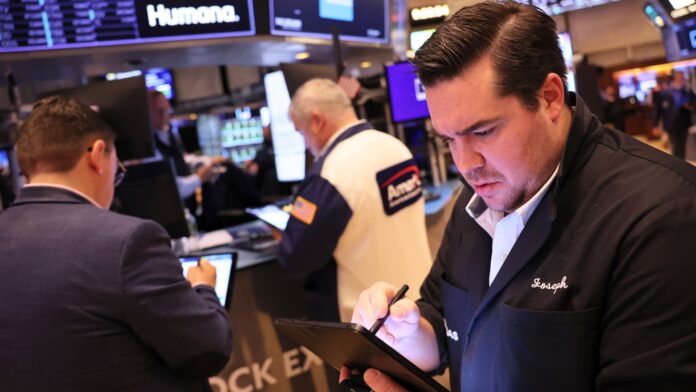As investors weigh the timing of a potential pivot from the Federal Reserve away from rising interest rates will come, more traders are pondering a portfolio pivot of their own with longer-dated bonds.
The funds are less sensitive to policy changes and more reflective of long-term expectations. And according to Strategas, Treasurys and cash-like bonds have been the two most popular ETF categories ranked by inflows this year.
“The rising-rate environment has been the story of the year, and so investors are looking for new tools in their playbook,” Bryon Lake, global head of ETF Solutions at JPMorgan Asset Management, told Bob Pisani on CNBC’s ‘ETF Edge‘ on Monday.
Lake runs the JPMorgan Ultra-Short Income ETF (JPST), which is currently the largest actively managed ETF in the world. The fund has a three-month duration and is currently yielding 3.2% on the SEC 30-day, he said, and 4.4% on its yield to maturity.
“Investors are using JPST as a place to hide out while they wait for the market to find its footing,” he said.
The actively managed ETF invests primarily in a diversified portfolio of short-term, investment grade fixed-and floating-rate corporate and structured debt.
“One of the good things about the Fed hiking rates is short duration, or money market funds, are actually paying something now,” Tom Lydon of VettaFi added on ‘ETF Edge’ on Monday.
Lydon stressed that three components of JPST, the three-month duration, active management and net asset value, lead to a more attractive yield.
“If you’ve kept your powder dry, and you’re looking for areas where you can actually make some money these days, it’s a great opportunity,” he said.
The JPMorgan Equity Premium Income ETF (JEPI), which seeks to provide similar returns as the S&P 500 with lower volatility and monthly income, also is scoring big inflows this year. The fund is actively managed and contains a broad array of fixed income securities, including corporate bonds and mortgage securities.
“A lot of investors think first about a benchmark or a passive instrument,” Lake said. “But when you’re looking at a passive kind of fixed income benchmark, that’s not exactly how investors really think about investing in bonds.”
Traders investing in bond ETFs, according to Lake, are looking for a fund that will balance a portfolio and offer yield with a low correlation to equities.
“The pendulum has swung,” Lydon added. “We’re now in a situation where you have managers who’ve been in place for a long period of time. And for the short-term durations, because they hold them to maturity, they know exactly what yield they’re going to get. And the shareholders, from a diversified standpoint, we benefit from that higher yield while they’re maintaining a balanced NAV.”


